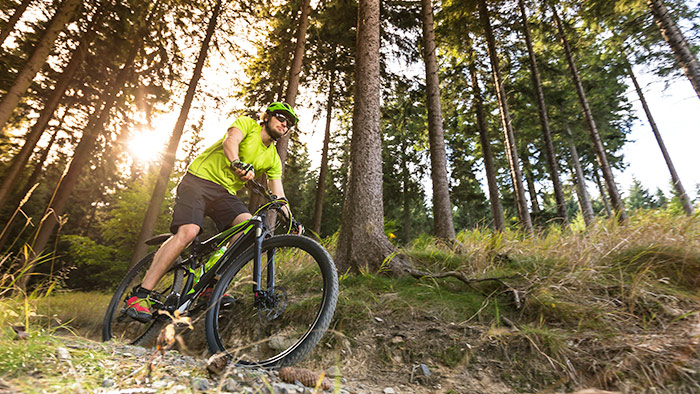Top 10 Ways to Improve Your Mountain Biking Skills
Jan 15, 2020 02:58
Mountain biking is often considered as the epitome of the biking industry, but successful mountain biking is more than speed and fitness alone.
In reality, you should also possess a certain degree of bike handling skills and technical riding abilities.
And like any other sports activity, you train and refine your abilities to become a competent all-around rider.
Integrate these ten things into your mountain biking, and you'll see yourself become a well-rounded MTB athlete in no time.

Ensure your Bike is Properly Set Up
It’s quite a challenge to focus on the trail when your bike is not properly set up.
And so, the first thing to do is to perform a basic bike maintenance routine.
Go over your bike and look for any part that is worn out, broken, cracks or just anything that isn't working right and fix it immediately.
Further, you need to ensure that the bike is fit for you and take advantage of the MTB technology such as adjustable suspension, dropper seat posts, thru-axles, and more.
The good news is, you can never fail to get a bike that fits your cycling needs, because at thrillappeal.com, for instance, numerous options will let you feel more confident and comfortable, regardless of what the trail throws at you.
Pick the Right Riding Partners
The second tip to improve your MTB skill is that you should ride with riders better than yourself, and this will help to push yourself a little harder. More importantly, it will allow you to learn some of the winning habits of riders who have been in the game for longer than you.
Focus on Where you’re Going
A common mistake we see with rookie bikers is concentrating a lot about their trails, i.e., the rocks and trees they're avoiding, rather than concentrating on where they want to go or what they want to achieve.
This is called target fixation, and there's a lot of science why this works, and so, you should always look ahead looking for what you want, and this way, your ride will get smoother.
Relax
Whatever terrain you are tackling, it’s always a good idea to learn to be comfortable.
For starters, learn how to position your body about the bike properly.
In particular, understand that the best suspension you have in your arms and legs, and you should let them absorb the bumps and ruts of the trail. Your goal should be to transfer the weight to your pedals and, at the same time, remain light on the handlebars.
Focus on Cadence
Cadence or rather, the rotations of your cranks are a key aspect to the success of your riding.
See, most of the professional athletes usually spend a lot of their time developing a good spin, and so should you.
Make a habit of spinning as it’s not only more efficient, but it’s handy in maintaining traction, even on the loose trail conditions.
Develop your Braking
Unlike road racing, speed is not a top priority in mountain bikes, but rather bike handling skills top the list.
Be as it may, it doesn't mean that you shouldn't be conscious of your braking skills; in any case, they're an essential part of successful riding.
Now, there're several aspects to braking, but one of the skills that should adequately master is the modulation and adjustability that will let you handle the terrain with greater efficiency.
You also need to be quite observant when braking; for instance, don’t hit the brakes over an obstacle, but instead, try to evaluate it from afar, and when you commit, release the brakes and float on through until you’re clear.
Don’t Forget Strength Training
Mountain biking is quite physical, and it requires the engagement of many more muscles apart from your legs.
For instance, a strong upper and core are critical, especially when handling the rough terrains.
So, take the time to visit the gym for routine training- a 45-session minute long with alternating exercises is sufficient to keep in you in best shape and form.
Nutrition and Hydration
Remember that your body needs fuel to keep on going, and this fuel is supplied by what you eat and drink.
While training, it’s vital that you have your replenishments constantly, ideally after every 30 or 40 minutes.
Here, you can have fruits and light snacks. You mustn't rely on feed stations as they may run out of food.
Also, drinks plenty of water and target at least one liter for every mile.
Take a Clean Line as Opposed to the Hardest
The next thing to improving your MTB skills is picking the cleanest and most efficient terrain.
In most cases, the best line isn't necessarily the most challenging or hardest, and so, you should pick the best line. Remember carrying speed through challenging sections is always important than performing the hard maneuvers.
Patience
Like any other skill, mastering mountain biking does not come easy; in any case, it will require effort from your side, and if you're not patient, you'll easily lose track and fail.
So, it's important to get a patient and have the dedication required for success.







































































